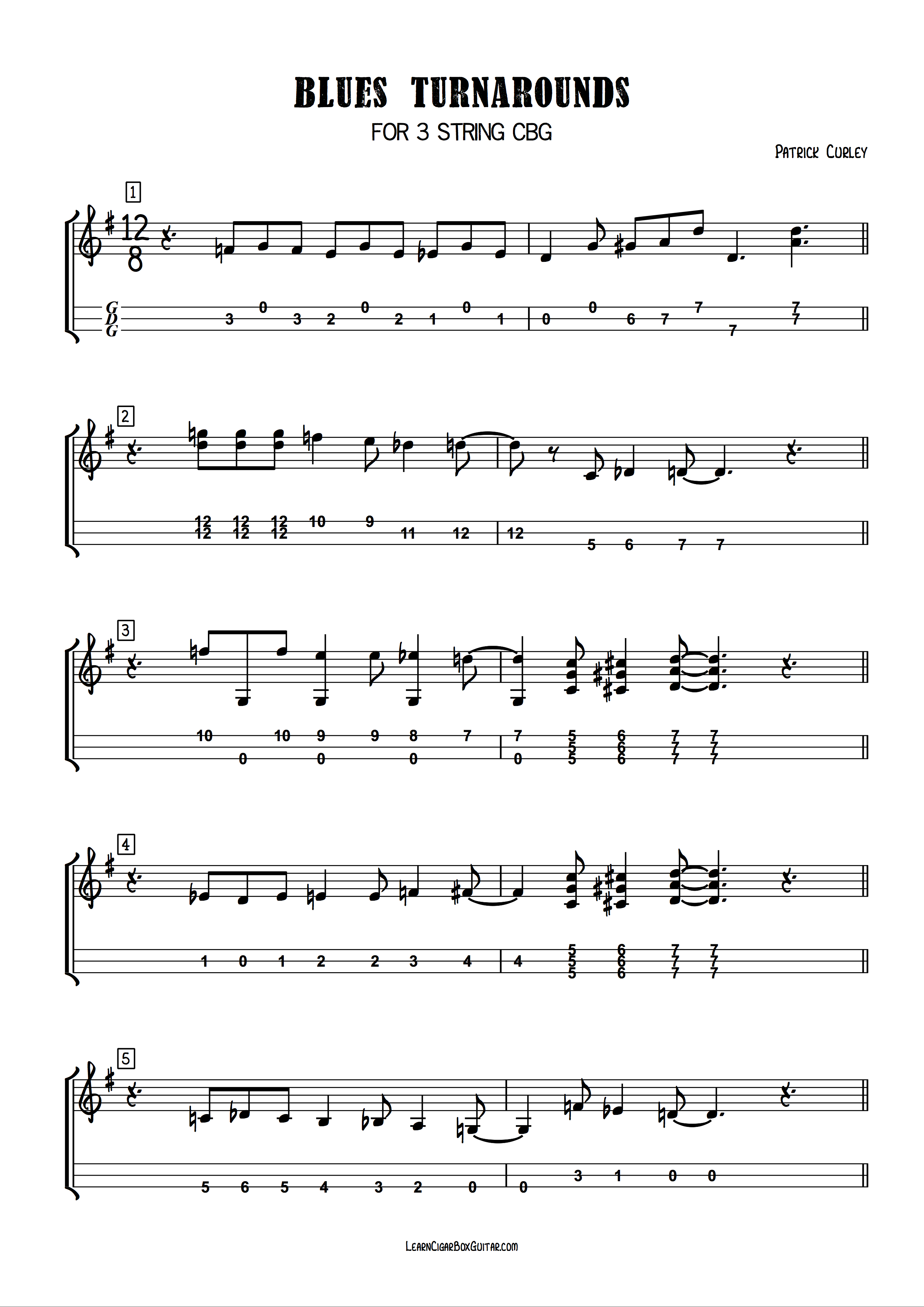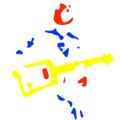Music notation is nothing more than a method (any method) for writing down what's going on in a piece of music. Over hundreds of years standard music notation has developed into such a comprehensive system that it is possible to play a piece of music from notation without ever having heard it before.
Because it is such a comprehensive system it can be complicated and takes a little while to learn. For this reason tablature was developed specifically for guitar players. Guitar tab has 6 lines, one for each string, numbers on these lines indicate which fret to play and therefore the pitch of the note.
CBG tab uses the same principles. This makes standard guitar tab more easily translatable and it allows us to notate all 12 notes in the octave.

- The CBG tab on this site looks more or less like this. The standard notation is included, although you can play the tune without it if you listen to the examples.
- Each of the three lines in the tab indicates one of the strings on your guitar. The bottom line is your bass string (usually called the bottom string), the middle line is the middle string and the top line is the top string.
- The 0's on the bottom line are your regular bass notes with the thumb on the open bottom string.
So if you have frets that's all you need to know. Listen to the tune so you know what you're trying to do and use the tab to help you find the notes.
Fretless Guitars
If you don't have any frets then hopefully you'll have some markers on the neck to indicate your left hand position. On a standard guitar these position markers, we can call them dots, are on the 3rd, 5th, 7th, 9th, 12th and 15th frets. If you have the option of placing your dots, this where I'd suggest putting them. Another in the 10th position is a good idea too, intonation is trickier down here.
If your dots are here then you're first dot is position 3, the second position 5 etc and you can play the tab above and everything in The Starter Pack. If they are placed elsewhere, or your not sure, then continue.
Getting the dots just right takes some careful measurement and is beyond the scope of this site but you can easily check where you're dots are if you have a guitar tuner or a piano and a really good ear.
The table below indicates the names of the notes in each position in a number of keys.
| Open | 1 | 2 | 3 | 4 | 5 | 6 | 7 | 8 | 9 | 10 | 12 | 13 | 14 | 15 | 16 | |
| C | C# | D | D# | E | F | F# | G | G# | A | A# | B | C | C# | D | D# | E |
| D | D# | E | F | F# | G | G# | A | A# | B | C | C# | D | D# | E | F | F# |
| E | F | F# | G | G# | A | A# | B | C | C# | D | D# | E | F | F# | G | G# |
| F | F# | G | G# | A | A# | B | C | C# | D | D# | E | F | F# | G | G# | A |
| G | G# | A | A# | B | C | C# | D | D# | E | F | F# | G | G# | A | A# | B |
| A | A# | B | C | C# | D | D# | E | F | F# | G | G# | A | A# | B | C | C# |
- Tune one of your strings to any of the notes on the far left column. If we tune to C we only refer to the top row.
- Play a note on one of your dots
- Find that note in the row you're tuned to. If we tune to C and play a G then according to the table we're in the 7th position. Play an A and you're in the 9th.
So now you know the position of your dots you can find the notes in those positions easily enough. To find notes in the other positions move on.
The Chromatic scale
With the slide you can play an almost infinite number of different notes. We are only concerned with 12 of them and we need to be able to find them. You should have at least on pair of dots 2 positions apart. Positions 5 and 7 are commonly marked, they are used a lot. If you do then first listen for the sound of position 5, then of 7 and then bring your slide in between and listen for a note that sounds in tune. There's only one and it's located it in the middle somewhere. Use a tuner, or better still a piano, to verify.
Do the same in every other position. Sometimes the dots are three notes apart and there'll be two notes in the middle you'll have to find. Use a tuner if you need to, eventually you should be able to find them without one though. Eventually you'll be able to play all twelve notes in the western musical system, the Chromatic scale.
This will seem a bit tricky for now and, if your dots are in the standard positions, you won't need to do it at all in the Starter Pack. It will be much easier once you've learned to use your slide properly.
